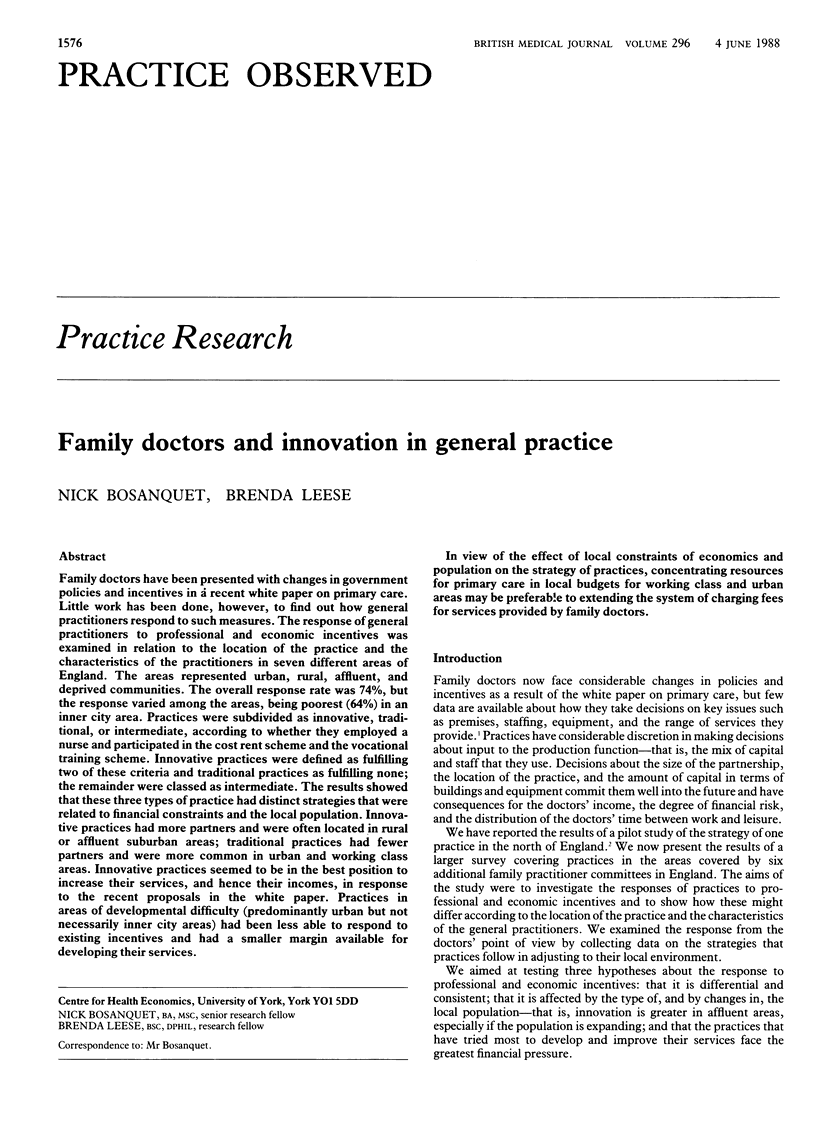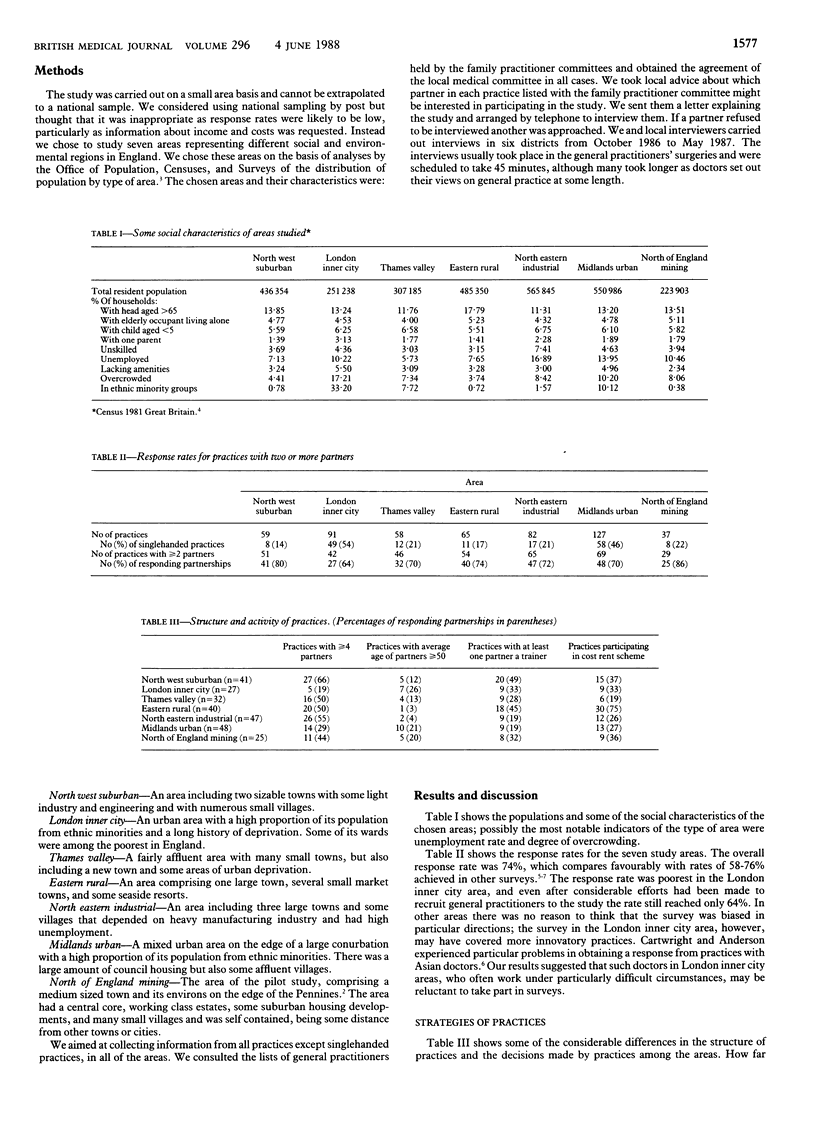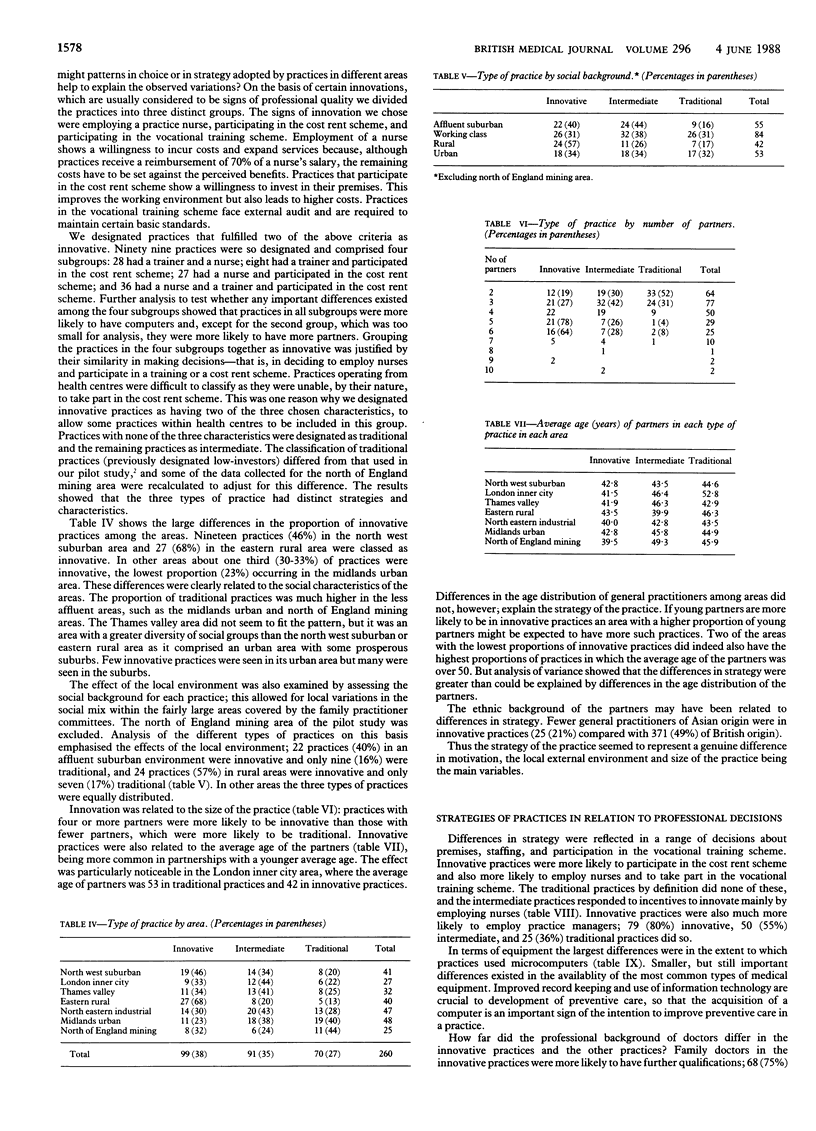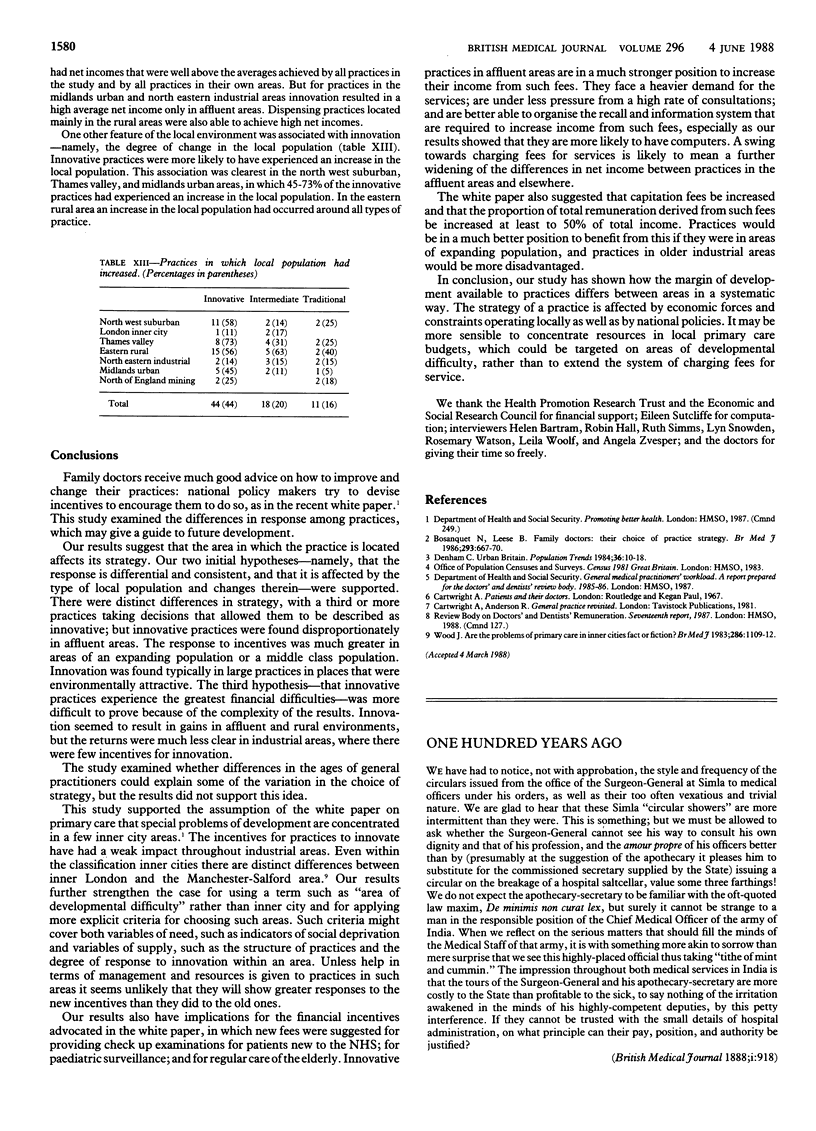Abstract
Family doctors have been presented with changes in government policies and incentives in a recent white paper on primary care. Little work has been done, however, to find out how general practitioners respond to such measures. The response of general practitioners to professional and economic incentives was examined in relation to the location of the practice and the characteristics of the practitioners in seven different areas of England. The areas represented urban, rural, affluent, and deprived communities. The overall response rate was 74%, but the response varied among the areas, being poorest (64%) in an inner city area. Practices were subdivided as innovative, traditional, or intermediate, according to whether they employed a nurse and participated in the cost rent scheme and the vocational training scheme. Innovative practices were defined as fulfilling two of these criteria and traditional practices as fulfilling none; the remainder were classed as intermediate. The results showed that these three types of practice had distinct strategies that were related to financial constraints and the local population. Innovative practices had more partners and were often located in rural or affluent suburban areas; traditional practices had fewer partners and were more common in urban and working class areas. Innovative practices seemed to be in the best position to increase their services, and hence their incomes, in response to the recent proposals in the white paper. Practices in areas of developmental difficulty (predominantly urban but not necessarily inner city areas) had been less able to respond to existing incentives and had a smaller margin available for developing their services.
In view of the effect of local constraints of economics and population on the strategy of practices, concentrating resources for primary care in local budgets for working class and urban areas may be preferable to extending the system of charging fees for services provided by family doctors.
Full text
PDF




Selected References
These references are in PubMed. This may not be the complete list of references from this article.
- Bosanquet N., Leese B. Family doctors: their choice of practice strategy. Br Med J (Clin Res Ed) 1986 Sep 13;293(6548):667–670. doi: 10.1136/bmj.293.6548.667. [DOI] [PMC free article] [PubMed] [Google Scholar]
- Wood J. Are the problems of primary care in inner cities fact or fiction? Br Med J (Clin Res Ed) 1983 Apr 2;286(6371):1109–1112. doi: 10.1136/bmj.286.6371.1109. [DOI] [PMC free article] [PubMed] [Google Scholar]


